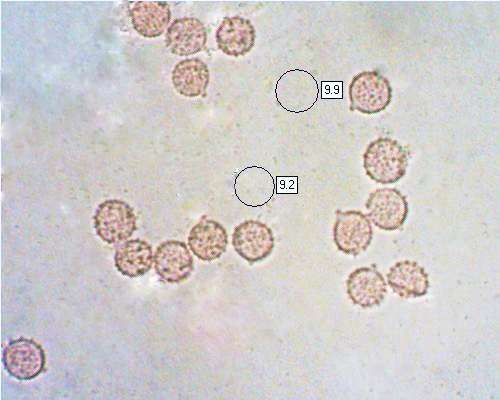Laccaria tortilis (Bolton) Cooke - Twisted Deceiver
Phylum: Basidiomycota - Class: Agaricomycetes - Order: Agaricales - Family: Hydnangiaceae
Distribution - Taxonomic History - Etymology - Identification - Culinary Notes - Reference Sources
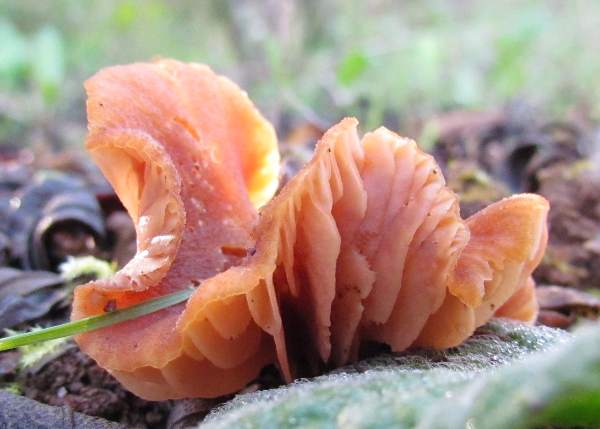
Laccaria tortilis is a diminutive member of the Deceiver clan.
Distribution
Rather an uncommon sight in Britain and Ireland, Laccaria tortilis is found on mainland Europe, where it is most common in central and southern countries. The Twisted Deceiver is also reported from many parts of North America. All Laccaria species are ectomycorrhizal fungi, forming symbiotic relationships with trees or with shrubs.
Taxonomic history
Described in 1788 by British mycologist James Bolton, the Twisted Deceiver was given the scientific name Agaricus tortilis. Almost a century elapsed before, in 1884, Mordecai Cubitt Cooke transferred this species to its present genus, thereby renaming it Laccaria tortilis.
Many other mycologists have noticed this little mushroom over the past two centuries, and so Laccaria tortilis has acquired many synonymous names including Agaricus tortilis Bolton, Omphalia tortilis (Bolton) Gray, Agaricus echinosporus Spegazzini, Laccaria echinospora (Spegazzini) Singer, and Clitocybe tortilis (Bolton) Gillet.
Etymology
The generic name Laccaria translates to 'lacquer' (shiny paint), and the specific epithet tortilis means contorted (twisting).
Identification guide
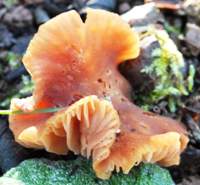 |
CapThe pinkish-brown caps are sometimes no more than 0.5cm across and rarely larger than 2cm, convex at first becoming irregularly flattened, often with a slight central depression; the margins are irregularly wavy with striations reaching almost to the centre. Like other deceivers, the caps are hygrophanous and become a much paler pink when they dry out. |
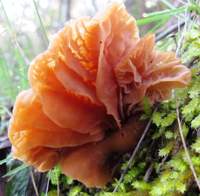 |
GillsPinkish, but generally a little paler than the cap; adnate and distant. Stem1 to 2mm in diameter and sometime caespitose (at least with no stem visible above soil level), rarely more than 1 to 2cm tall, the pinkish-brown fibrous stems are usually bent. When young and fresh the stems are covered in white down (fine white hairs) towards the base. |
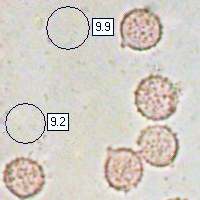 |
SporesGlobose, 9.5-14μm diameter excluding spines (11.5-15μm diameter including spines); ornamented with broad spines up to 2μm tall. Spore printWhite. BasidiaEach basidium producing just two large spores rather than four spores as in other Laccaria species. This clearly differentiates this little deceiver from other fungi in the same genus. |
Odour/taste |
Not distinctive. |
Habitat & Ecological role |
Ectomycorrhizal, usually in small groups, most often on bare damp soil beneath with willows or alders, but in North America also found with trees in the families Pinaceae and Fagaceae. |
Season |
June to November in Britain and Ireland; even later in southern European countries. |
Similar species |
Laccaria laccata is much larger and has a slightly striate margin. Its basidia are four spored. Laccaria amethystina is alarger violet coloured member of the same genus. Its basidia are four spored. Laccaria bicolor is larger and, especially when young, is easily distinguished by its stem, which has a lilac base and a tawny upper section. Its basidia are four spored. Laccaria proxima is larger and more slender; it has a scurfy cap and ellipsoidal spores. Its basidia are four spored. |
Culinary Notes
Some of the Deceivers are reportedly edible, but Laccaria tortilis is not generally considered safe to eat (and in any case these mushrooms are much smaller than others in the genus).
Reference Sources
Fascinated by Fungi, 2nd Edition, Pat O'Reilly 2016, reprinted by Coch-y-bonddu Books in 2022.
Dictionary of the Fungi; Paul M. Kirk, Paul F. Cannon, David W. Minter and J. A. Stalpers; CABI, 2008
Taxonomic history and synonym information on these pages is drawn from many sources but in particular from the British Mycological Society's GB Checklist of Fungi.
Fascinated by Fungi. Back by popular demand, Pat O'Reilly's best-selling 450-page hardback book is available now. The latest second edition was republished with a sparkling new cover design in September 2022 by Coch-y-Bonddu Books. Full details and copies are available from the publisher's online bookshop...
